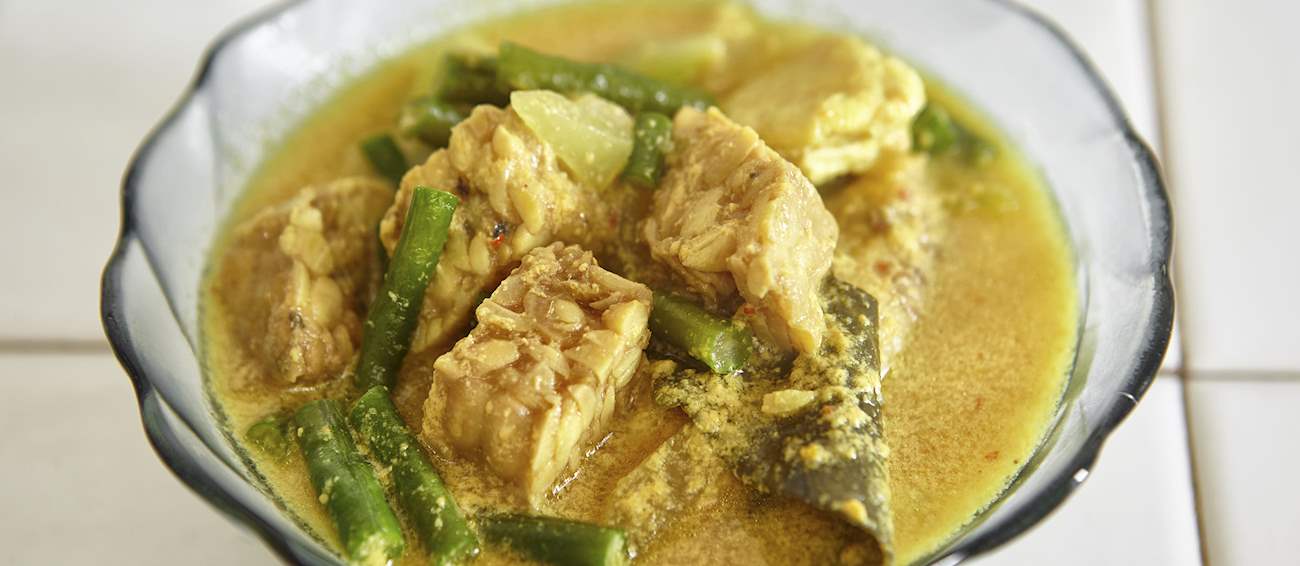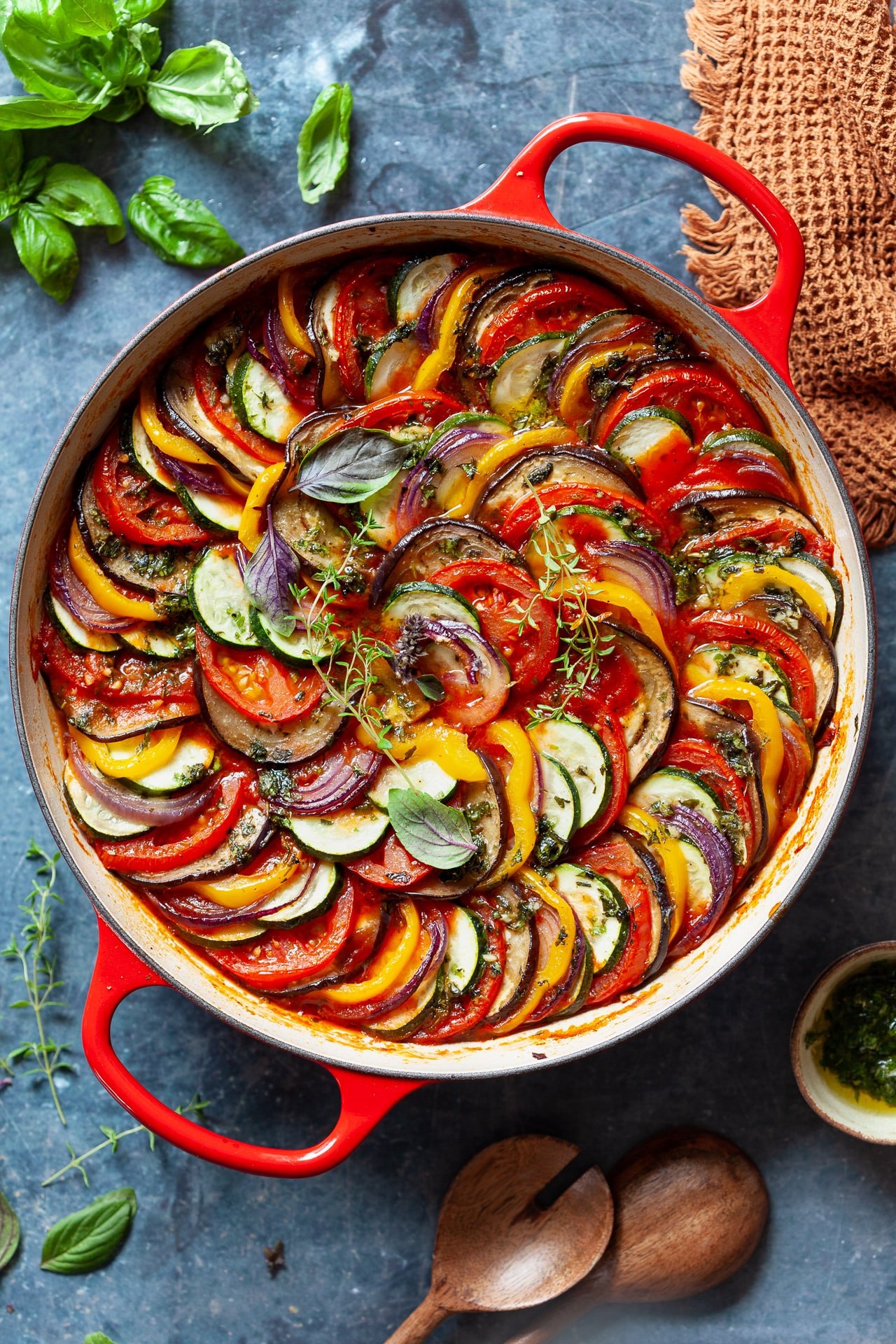A Dive into the Delicious World of Sayur Lodeh: Beyond the Basic Recipe
Related Articles
- Tiwul: A Journey Into The Heart Of Javanese Cuisine
- Sroto: A Culinary Journey Through Indonesia’s Flavors
- A Journey Through The Flavors Of Rendang: From Humble Beginnings To Global Fame
- A Journey Through Saltimbocca: From Humble Beginnings To Culinary Mastery
- Oyakodon: A Simple Yet Delicious Japanese Comfort Food
Introduction
Uncover the latest details about A Dive into the Delicious World of Sayur Lodeh: Beyond the Basic Recipe in this comprehensive guide.
A Dive into the Delicious World of Sayur Lodeh: Beyond the Basic Recipe

Sayur Lodeh, a quintessential Indonesian dish, is a testament to the country’s rich culinary heritage. This creamy, aromatic coconut milk-based vegetable stew is not just a meal but an experience. It’s a symphony of textures and flavors, a dance of spices and vegetables, all coming together in a comforting embrace. But beyond the familiar comfort, lies a world of culinary possibilities waiting to be explored.
This article embarks on a journey into the heart of Sayur Lodeh, offering a comprehensive guide that goes beyond the basic recipe. We’ll unravel the nuances of its history, delve into the art of crafting the perfect broth, explore the endless variations that make each rendition unique, and provide invaluable tips for elevating your Sayur Lodeh game.
A Glimpse into the Past: The Origins of Sayur Lodeh
Sayur Lodeh, like many Indonesian dishes, has roots deeply entwined with the country’s history. Its origins can be traced back to the ancient spice trade, where influences from various cultures blended to create a unique culinary tapestry. The use of coconut milk, a staple ingredient in many Southeast Asian cuisines, hints at the influence of Malay and Javanese traditions.
The name itself, "Sayur Lodeh," is a combination of two words: "Sayur," meaning vegetables, and "Lodeh," which refers to the creamy, coconut milk-based broth. This simple yet evocative name encapsulates the essence of the dish: a harmonious blend of vegetables simmered in a rich, aromatic broth.
The Foundation: Crafting the Perfect Sayur Lodeh Broth
The soul of any Sayur Lodeh lies in its broth. A well-crafted broth is the foundation upon which the entire dish rests, providing the base for the flavors to bloom and the vegetables to soften. Here’s a step-by-step guide to crafting a truly exceptional broth:
1. The Aromatic Base:
- Spice it Up: The foundation of the broth is a fragrant blend of spices. Traditionally, this includes turmeric, lemongrass, galangal, and bay leaves. For a deeper, more complex flavor, consider adding cumin, coriander, or even a pinch of dried chili flakes.
- The Power of Garlic and Shallots: These pungent alliums add depth and richness to the broth. Sauté them in a bit of oil until softened and fragrant, releasing their aromatic essence.
- The Finishing Touch: A dash of salt and a squeeze of lime juice at the end of the cooking process balance the flavors and add a subtle tang.

2. The Coconut Milk Magic:
- Quality Matters: Choose high-quality coconut milk for a richer, more flavorful broth. Full-fat coconut milk is ideal, but you can also use light coconut milk if you prefer a lighter flavor.
- Slow and Steady: Allow the coconut milk to simmer slowly with the spices and aromatics. This allows the flavors to meld and create a harmonious symphony of taste.
- Don’t Boil: Avoid boiling the coconut milk, as this can cause it to separate and lose its creamy texture. Simmer gently until the broth reaches your desired consistency.
The Vegetable Symphony: A Colorful Array of Flavors
The beauty of Sayur Lodeh lies in its versatility. It’s a blank canvas for a myriad of vegetables, each adding its own unique flavor and texture to the dish.
Classic Choices:
- Green Beans: Their crisp texture and subtle sweetness complement the creamy broth beautifully.
- Long Beans: These long, slender beans offer a delightful crunch and a slightly earthy flavor.
- Potatoes: Providing a hearty texture and a subtle sweetness, potatoes are a staple ingredient in Sayur Lodeh.
- Tofu: For a vegetarian option, tofu adds a soft, spongy texture and absorbs the flavors of the broth.
- Onions: A versatile ingredient, onions add a sharp, savory note to the dish.

Beyond the Basics:
- Mushrooms: For a meaty texture and an umami boost, add sliced mushrooms to your Sayur Lodeh.
- Eggplant: Its smoky flavor and soft texture add a unique dimension to the dish.
- Cabbage: A good source of vitamins and minerals, cabbage adds a crispness and a slightly sweet flavor.
- Spinach: Its delicate flavor and tender leaves add a vibrant green hue to the dish.
- Corn: For a sweet and juicy addition, add corn kernels to your Sayur Lodeh.
Key Tips for Perfecting Vegetable Preparation:
- Pre-Cook: For tougher vegetables like potatoes, eggplant, and beans, it’s best to pre-cook them slightly before adding them to the broth. This ensures they cook evenly and retain their texture.
- Balance is Key: Choose a variety of vegetables with different textures and flavors to create a well-rounded dish.
- Timing Matters: Add vegetables that require longer cooking times first, followed by those that cook quickly.
The Finishing Touches: Elevating Your Sayur Lodeh
A few simple additions can transform your Sayur Lodeh from good to extraordinary.
- A Burst of Flavor: A squeeze of lime juice adds a refreshing tang and balances the richness of the coconut milk.
- A Touch of Heat: For a spicy kick, add a spoonful of sambal oelek or a sprinkle of chili flakes.
- The Garnish: A sprinkle of chopped cilantro, a few slices of red chili peppers, or a drizzle of fried shallots add a visual appeal and a burst of flavor.
Beyond the Traditional: Exploring Culinary Variations
Sayur Lodeh is a canvas for culinary creativity. Here are some exciting variations to explore:
1. Sayur Lodeh with Meat:
- Beef: Tender beef cubes simmered in the broth add a rich, savory flavor to the dish.
- Chicken: A classic combination, chicken adds a delicate flavor and a moist texture.
- Fish: For a lighter option, try adding fish fillets or chunks of seafood to the broth.
2. Sayur Lodeh with Different Broths:
- Tom Yum: Infuse the broth with lemongrass, kaffir lime leaves, galangal, and chili peppers for a spicy and fragrant twist.
- Laksa: Add a touch of curry paste and a dash of fish sauce for a rich and flavorful broth.
- Mushroom Broth: For a vegetarian option, use a flavorful mushroom broth as the base.
3. Sayur Lodeh with Exotic Vegetables:
- Bamboo Shoots: Their unique texture and subtle flavor add a delightful dimension to the dish.
- Bitter Gourd: Its slightly bitter flavor adds a contrasting note to the creamy broth.
- Water Spinach: A popular leafy green in Southeast Asia, water spinach adds a unique texture and a slightly earthy flavor.
Mastering the Art of Cooking Sayur Lodeh: Tips and Tricks
- The Power of Patience: Sayur Lodeh is a dish that benefits from slow cooking. Allow the flavors to meld and the vegetables to soften for a truly satisfying meal.
- Don’t Overcrowd: Give the vegetables space to cook evenly. If necessary, cook them in batches to ensure they don’t become mushy.
- Taste and Adjust: As with any recipe, taste the broth throughout the cooking process and adjust the seasoning as needed.
- Leftovers? No Problem! Sayur Lodeh is even better the next day! The flavors deepen and the vegetables become even more tender.
Sayur Lodeh: A Culinary Legacy
Sayur Lodeh is more than just a recipe; it’s a testament to the rich culinary heritage of Indonesia. It’s a dish that brings people together, a symbol of shared meals and family traditions. Each bowl of Sayur Lodeh is a unique story, a blend of flavors, textures, and memories.
This article has merely scratched the surface of this fascinating culinary world. The journey of exploration continues, with each new experiment and variation adding to the tapestry of Sayur Lodeh. So, embrace the adventure, explore the possibilities, and let your creativity flow. The delicious world of Sayur Lodeh awaits!
Closure
We hope this article has helped you understand everything about A Dive into the Delicious World of Sayur Lodeh: Beyond the Basic Recipe. Stay tuned for more updates!
Don’t forget to check back for the latest news and updates on A Dive into the Delicious World of Sayur Lodeh: Beyond the Basic Recipe!
We’d love to hear your thoughts about A Dive into the Delicious World of Sayur Lodeh: Beyond the Basic Recipe—leave your comments below!
Stay informed with our next updates on A Dive into the Delicious World of Sayur Lodeh: Beyond the Basic Recipe and other exciting topics.





